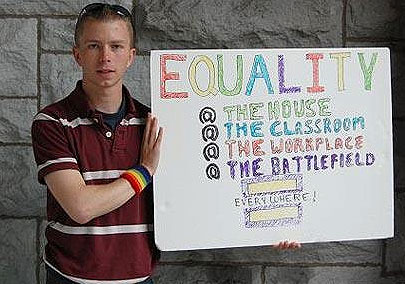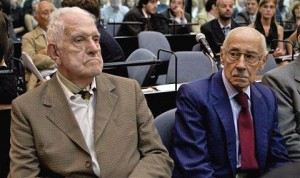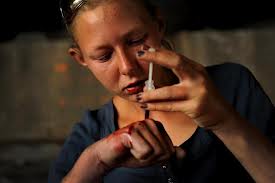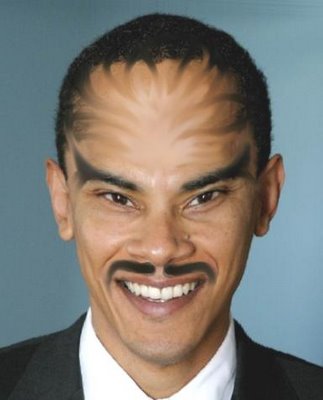Alex Constantine - March 24, 2016
BUENOS AIRES — President Obama Thursday visited a memorial in Argentina to the thousands of people killed and disappeared during that country’s “dirty war,” on the 40th anniversary of the coup that started it.
Obama used his visit to announce his plan to declassify new military and intelligence records that document the human rights violations from 1976 to 1983.
“There’s been controversy about the policies of the United States early in those dark days,” Obama said, standing beside the Argentinian President Mauricio Macri. “The United States when it reflects on what happened here has to reflect on its own past…. When we’re slow to speak out on human rights, which was the case here.”
Despite early U.S. support for the coup, Obama said U.S. diplomats, human rights workers and reporters played an important role in documenting the abuses that took place in the aftermath. He extolled the likes of diplomat Tex Harris, who worked at the U.S. embassy in Buenos Aires during the administration of then-President Jimmy Carter to document human rights abuses and identify the disappeared. Such men did so despite threats to themselves and their families, Obama said.
The new records will be added to a trove of more than 4,000 documents already declassified compiled by U.S. diplomats and used in Argentina to prosecute those accused in the abuses, Obama said.
What happened in Argentina “is not unique, and it’s not confined to the past,” he said. “Each of us have a responsibility each and every day to make sure that wherever we see injustice, wherever we see rule of law flaunted that we take responsibility to make this a better place for our children and grandchildren.”
Documents from the administration of President Gerald Ford, who was in office during the 1976 coup, show that top U.S. officials knew of the impending coup and did little to stop it.
"Several military contacts, who had previously downplayed the possibility of a coup, have, since December 5, suddenly shifted over to describing a coup as ‘inevitable," U.S. Ambassador to Argentina Robert Hill said in a Dec. 18, 1975, telegram to the State Department. "Timing has not yet been determined, but most observers expect the military to act before March."
On Feb. 28, 1976, less than a month before the coup, Hill wrote the State Department again with the good news that few Argentine politicians believed the United States was actively fomenting a coup. "Our stock with democratic civilian forces therefore remains high, but at same time our bridges to military are open," Hill wrote.
After the coup, then-secretary of State Henry Kissinger said in a March 26, 1976, staff meeting that he wanted to encourage the new military leaders of Argentina. "I don’t want to give the sense that they’re harassed by the United States," Kissinger said.
Obama arrived in a helicopter with Macri, after dancing tango the night before during a dinner with Macri and about 470 guests. Obama visited the museum inside the park Thursday and acknowledged that "there has been controversy about the politics of the U.S."
Despite being a spot for runners, the atmosphere in this memorial is rather gloomy. The names of the “disappeared” during Argentina’s "dirty war" are listed on the sides of the walkways, on the bank of the Río de la Plata.
The sculpture of a man stands in the middle of the river. It is a reference to the “death flights” – the military junta's practice of dropping alive opponents to the regime from aircraft or helicopters into the water.
A large sculpture in the park reads in Spanish: “Thinking is a revolutionary act,” in reference to the crack down on intellectuals during the country's 1973-1986 dictatorship.
The primary structure in the park is the Monument to the Victims of State Terrorism, a long wall — similar to the Vietnam War Memorial — containing 20,000 names and ages of victims. An additional 10,000 empty plaques represent victims who have yet to be identified. The wall is connected to a jetty that extends into the river, commemorating those who disappeared at sea.
A protest took place Thursday afternoon in Buenos Aires at the Plaza de Mayo square in front of the Argentinian presidential palace.
“We reject Obama’s presence because he came to support [Macri's] government, which has found agreement with the ‘vulture funds’ and [has plunged the country into] a massive debt crisis,” says Gabriel Solano, Head of the Workers’ Party.
Protestors held banners and played drums as men sold mineral water and soda to the people. On the ground, there were outlines of bodies drawn in chalk — like a crime scene — as symbols of victims of the dictatorship.
Silvina Retrivi, a language professor, said, "Obama's visit represents Argentina's shift towards a neoliberal economy. It is paradoxical that Obama spoke to us in the Usina del arte concert hall about health programs implemented in the U.S. when we could stop benefiting from our own health programs because of this neoliberal influence."





